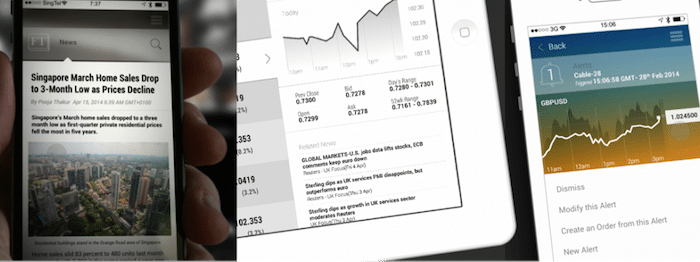
Single-dealer platforms –cross-product web platforms that investment banks and other financial firms use to deliver pricing, news, analysis and trading direct to customers—have long been a staple of the capital markets.
In a changing regulatory environment, firms are coming to the conclusion that single dealer platforms provide a unique opportunity to position themselves close to their clients, according to John Ashworth, chief operating officer at Caplin Systems, a provider of single-dealer platform technology.
“Financial firms realize their single dealer platforms present a unique opportunity for differentiation,” Ashworth told Markets Media. “Additionally, they are starting to weigh the question of how best to add value to their clients’ business operations and their overall relationship.”
Equally important is the fact that single dealer platforms are the best and in some cases, the only way to drive a high value mobile strategy, according to Ashworth.
“In some regions, we¹re seeing banks pull away from multi-dealer platforms on the basis that either it’s simply not profitable to serve their clients on that channel, or the client doesn’t necessarily see the best price, or both,” he said. “If a bank has a total view of a client’s spend, it’s more likely to be able to make a relationship adjusted price based on business volumes in other asset classes.”
It’s all part of a trend to use client knowledge and trading results to make better decisions on how and where to service clients. “Increasingly, firms are concluding that single dealer platforms are a vital element in providing liquidity intelligently,” said Ashworth. “They can combine it with critical workflows, and clients can access multiple products and services that do not lend themselves to delivery via a multi-bank platform.”
Among financial institutions, Ashworth see a huge difference between what the sell-side institutions think their clients want in terms of mobile and what the buy-side actually expects.
“There is widespread demand for viewing content such as research and data, for monitoring rates, for monitoring and amending orders and receiving trade alerts,” he said. “The sell side do understand that offering a mobile platform is an excellent way to project their franchise and brand by delivering a select group of key features and workflows to clients.”
Caplin Systems recently launched Caplin FX Mobile. Built in HTML, the app enables a bank’s clients to monitor and manage FX orders via smartphones and tablets.

Photo via Caplin Systems
“Financial firms have woken up to benefits of cross platform support for ‘access anywhere’ GUIs that HTML 5 offers,” said Ashworth. “With the increasing use of HTML 5 by companies like Google and Apple, and the support HTML 5 offers for rich interactions over web channels, firms understand HTML 5 offers a powerful delivery technology solution for clients.”
Featured image via iStock






